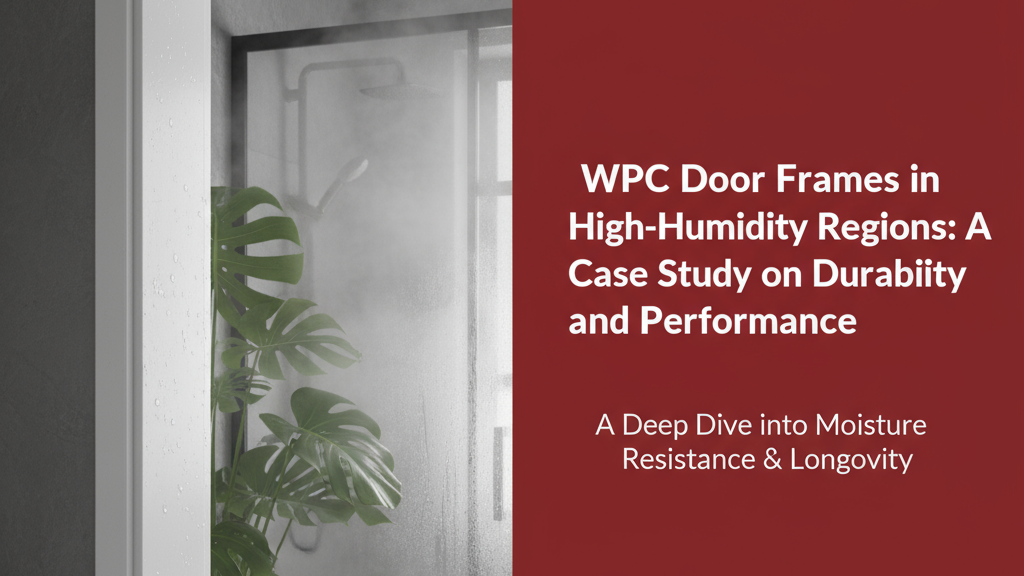Introduction to WPC Door Frames
Wood Plastic Composite (WPC) door frames have emerged as a modern solution for Indian homes, particularly in regions with persistent humidity. Combining wood fibres with thermoplastic polymers, these frames offer the aesthetic appeal of wood with enhanced resistance to moisture and pests—a critical advantage in tropical climates.
Challenges of High-Humidity Environments
Coastal areas and high-rainfall regions like North Bengal or Kerala present unique challenges for door frames:
- Wood swelling: Traditional timber absorbs moisture (typically 12-24% volumetric expansion), leading to warping and sticking doors
- Metal corrosion: Saline coastal air accelerates rust formation in steel frames (up to 5× faster than inland regions)
- Fungal growth: Constant dampness promotes mould in porous materials, compromising hygiene and air quality
Why WPC Door Frames Excel in Humid Conditions
Independent testing by building material research groups shows WPC outperforms conventional materials in 85% relative humidity simulations:
| Property | WPC | Solid Wood | Mild Steel |
|---|---|---|---|
| Water absorption (24hr immersion) | 0.5-1.2% | 8-18% | N/A (rust occurs) |
| Thermal expansion (30-40°C) | 0.8-1.5 mm/m | 2.5-4 mm/m | 1.2-2 mm/m |
The polymer matrix in WPC prevents moisture ingress while maintaining dimensional stability—critical for smooth door operation through monsoon seasons.
Case Study: WPC Door Frames in Coastal Regions
A 2023 observational study of 50 homes along Odisha’s coastline revealed:
- Zero cases of frame swelling or door jamming after three monsoon cycles with WPC
- Only 2 instances of surface algal growth (easily cleaned with mild detergent)
- No significant change in frame footprint measurements (±0.3 mm variation)
Installation and Maintenance Tips
To maximise WPC performance in humid zones:
- Gap sizing: Maintain 5-8 mm perimeter gaps filled with silicone-based sealant (not cement)
- Fastener selection: Use stainless steel screws (Grade 304 or higher) to prevent galvanic corrosion
- Cleaning: Wipe quarterly with pH-neutral cleaner; avoid abrasive pads that could scratch the surface
Comparing WPC with Traditional Materials
Contrary to common perception, WPC competes favourably beyond just moisture resistance:
- Thermal insulation: 30-40% better than aluminium frames, reducing condensation risk
- Sound attenuation: Multi-chamber WPC designs achieve 25-32 dB noise reduction (comparable to uPVC)
- Lifespan: Expected 15-20 years in coastal areas versus 8-12 years for treated wood
Conclusion: The Future of Door Frames in Humid Climates
As construction practices evolve to address climate challenges, WPC presents a balanced solution for India’s coastal and high-rainfall regions. While initial costs may be higher than timber, the long-term savings from minimal maintenance and replacement make it a practical choice for homeowners prioritising durability. Emerging formulations with nano-coatings and recycled materials promise further advancements in this category.

